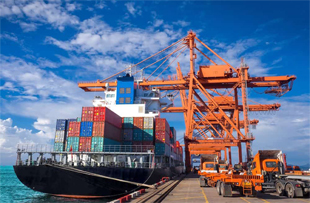The Netherlands, with its vibrant culture, picturesque landscapes, and bustling economy, attracts businesses and individuals from around the globe. Whether you are sending a parcel to a friend in Amsterdam or looking to expand your business into this European hub, understanding the intricacies of shipping to the Netherlands is crucial. In this guide, we’ll explore the key aspects of shipping to Netherlands, covering shipping methods, customs regulations, and tips to ensure a smooth and efficient process.
Shipping Methods
When shipping to the Netherlands, various methods are available, each with its own set of advantages and considerations.
Postal Services
The Dutch postal service, PostNL, is a reliable option for smaller parcels and documents.
International shipping services like DHL, FedEx, and UPS offer express options for quicker deliveries.
Freight Shipping
For larger shipments or commercial goods, freight shipping via air or sea may be more cost-effective.
Rotterdam, one of the largest and busiest ports in Europe, is a key entry point for sea freight.
Customs Declarations
Accurate and detailed customs declarations are essential for smooth shipping to the Netherlands.
Include a commercial invoice specifying the contents, value, and origin of the goods.
Familiarize yourself with the Harmonized System (HS) codes for proper classification.
VAT and Duties
The Netherlands is part of the European Union, so goods shipped from EU countries generally do not incur customs duties.
Value Added Tax (VAT) is applicable, and understanding the rates and exemptions is crucial.
Restricted and Prohibited Items
Certain items are restricted or prohibited when shipping to the Netherlands. Check the Dutch customs website for a comprehensive list.
Items such as weapons, drugs, and counterfeit goods are strictly regulated.
Packaging and Labeling
Ensure your packages are securely and appropriately packed to withstand the shipping process.
Clearly label packages with recipient details, including a local contact number.
Tips for a Smooth Shipping Experience
Research Customs Regulations:
Stay informed about the latest customs regulations and updates to avoid any surprises during the shipping process.
Utilize Tracking Services
Choose shipping services that offer tracking options to monitor the progress of your shipment.
Communicate with the Recipient
Inform the recipient in the Netherlands about the expected delivery date and any additional steps they may need to take for customs clearance.
Plan for Peak Seasons
Be aware of peak shipping seasons and plan accordingly to avoid potential delays.
Work with Reliable Carriers
Select reputable carriers with experience in international shipping to ensure the reliability of your shipments.
Conclusion
Shipping to the Netherlands requires careful planning and adherence to customs regulations. By understanding the shipping methods, customs procedures, and following best practices, you can ensure a smooth and successful shipping experience to this beautiful European destination. Whether you are sending personal items or expanding your business into the Dutch market, a well-executed shipping strategy is essential for building positive relationships and ensuring customer satisfaction.

